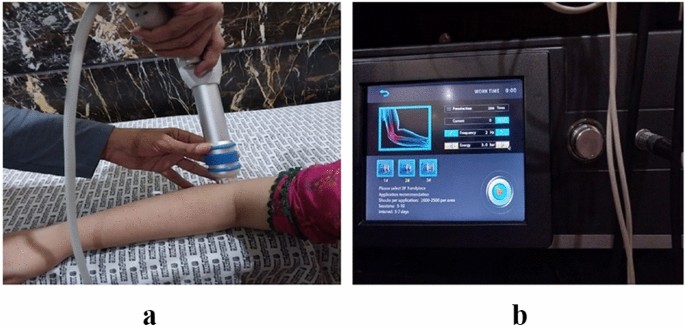Tennis Elbow, also known as Lateral Epicondylitis (LE), is a common condition that affects millions of people worldwide. While it is often associated with athletes who play racquet sports, this painful ailment can affect anyone whose daily activities involve repetitive arm movements. Understanding the causes, recognizing the symptoms, and exploring effective treatments are crucial steps in managing this condition and regaining quality of life.
What Is Tennis Elbow?
Tennis Elbow is a form of tendonitis that occurs when the tendons connecting the forearm muscles to the outer part of the elbow become inflamed or damaged. The condition gets its name from its prevalence among tennis players, but it is not exclusive to them. Anyone who performs repetitive gripping or wrist extension activities is at risk of developing this condition.
The Anatomy Behind the Pain
To understand Tennis Elbow, it is important to know a bit about the anatomy of the elbow. The elbow joint is made up of three bones: the humerus, the radius, and the ulna. The bony bump on the outer side of the elbow is called the lateral epicondyle. This is where the forearm muscles responsible for extending the wrist and fingers attach via tendons. When these tendons are overused or strained, small tears can develop, leading to pain and discomfort.
Causes of Tennis Elbow
While the name suggests a connection to tennis, there are numerous other causes of this condition. Below are some of the most common factors that contribute to its development:
Repetitive Arm Movements
- Playing racquet sports like tennis, squash, or badminton
- Using hand tools such as screwdrivers, hammers, or wrenches
- Engaging in activities like painting, typing, or knitting
- Performing manual labor that involves lifting or carrying heavy objects
These activities place repeated stress on the tendons in the forearm, leading to microscopic tears and inflammation over time.
Poor Technique
In sports and other physical activities, improper technique can increase the strain on the elbow. For example, using a tennis racket that is too heavy or has the wrong grip size can exacerbate the problem. Similarly, poor posture while working at a desk or lifting objects can contribute to the development of this condition.
Age and Overuse
Tennis Elbow is more common in adults between the ages of thirty and fifty. As people age, their tendons become less flexible and more prone to injury. Additionally, individuals who engage in repetitive tasks without allowing sufficient time for rest and recovery are at a higher risk.
Symptoms of Tennis Elbow
The symptoms of Tennis Elbow typically develop gradually and worsen over time if left untreated. Here are the most common signs to watch for:
Pain on the Outer Elbow
The hallmark symptom of Tennis Elbow is pain located on the outer part of the elbow. This pain may radiate down the forearm and is often described as a dull ache that becomes sharper with activity.
Weakened Grip Strength
Many individuals with Tennis Elbow experience difficulty gripping objects. Everyday tasks such as shaking hands, holding a cup, or turning a doorknob can become challenging due to weakness and discomfort in the affected arm.
Tenderness and Swelling
The area around the lateral epicondyle may feel tender to the touch. In some cases, mild swelling may also be present, although this is less common.
Pain During Specific Movements
Certain movements, such as extending the wrist or lifting objects with the palm facing down, can trigger or worsen the pain. This is because these actions place additional stress on the already damaged tendons.
Diagnosing Tennis Elbow
If you suspect you have Tennis Elbow, it is important to seek medical advice for an accurate diagnosis. A healthcare professional will typically perform a physical examination and ask about your symptoms and daily activities. They may apply pressure to the affected area or ask you to perform specific movements to assess pain levels.
Imaging Tests
In some cases, imaging tests such as X-rays or magnetic resonance imaging scans may be recommended to rule out other conditions, such as fractures or arthritis. However, these tests are not always necessary for diagnosing Tennis Elbow.
Treatment Options for Tennis Elbow
Treatment for Tennis Elbow focuses on reducing pain, promoting healing, and preventing further injury. Most cases can be managed with conservative measures, although severe or persistent cases may require more advanced interventions.
Rest and Activity Modification
One of the first steps in treating Tennis Elbow is to rest the affected arm and avoid activities that aggravate the condition. Modifying your daily routine to reduce repetitive motions can help prevent further damage and allow the tendons to heal.
Physical Therapy
Physical therapy plays a key role in the recovery process. A therapist can teach you exercises to stretch and strengthen the forearm muscles, improving flexibility and reducing strain on the tendons. Techniques such as massage and ultrasound therapy may also be used to promote healing.
Pain Relief Measures
To manage pain and inflammation, over-the-counter medications such as ibuprofen or acetaminophen can be helpful. Applying ice packs to the affected area for fifteen to twenty minutes several times a day can also provide relief.
Braces and Supports
Wearing a brace or strap around the forearm can help alleviate pressure on the tendons by redistributing the force during movement. These devices are particularly useful for individuals who cannot avoid repetitive activities entirely.
Injectable Treatments
In cases where conservative treatments are not effective, a doctor may recommend corticosteroid injections to reduce inflammation. Platelet-rich plasma therapy, which involves injecting concentrated platelets from the patient’s own blood into the injured area, is another option that has shown promise in promoting healing.
Surgical Intervention
Surgery is considered a last resort for Tennis Elbow and is typically reserved for cases that do not improve after six to twelve months of nonsurgical treatment. The procedure involves removing damaged tissue and repairing the affected tendons. Recovery from surgery can take several months, and physical therapy is usually required afterward.
Preventing Tennis Elbow
While it may not always be possible to prevent Tennis Elbow, there are steps you can take to reduce your risk:
Use Proper Equipment
If you play sports or engage in activities that involve repetitive arm movements, ensure that your equipment is appropriate for your needs. For example, use a tennis racket with the correct grip size and weight to minimize strain on your elbow.
Practice Good Technique
Whether you are playing sports, working at a desk, or performing manual labor, using proper technique can help protect your joints and tendons. Consider taking lessons or consulting with a professional to improve your form.
Take Breaks and Stretch
Avoid overusing your arm by taking regular breaks during repetitive tasks. Incorporating stretches and strengthening exercises into your routine can also help maintain flexibility and reduce the risk of injury.
Listen to Your Body
Pay attention to any signs of discomfort or pain in your elbow. Addressing minor issues early can prevent them from developing into more serious conditions.
Living with Tennis Elbow
Managing Tennis Elbow requires patience and persistence. While the condition can be frustrating, especially when it interferes with daily activities, most people experience significant improvement with the right treatment plan. By understanding the causes, recognizing the symptoms, and exploring available treatments, you can take proactive steps toward recovery and long-term wellness.





